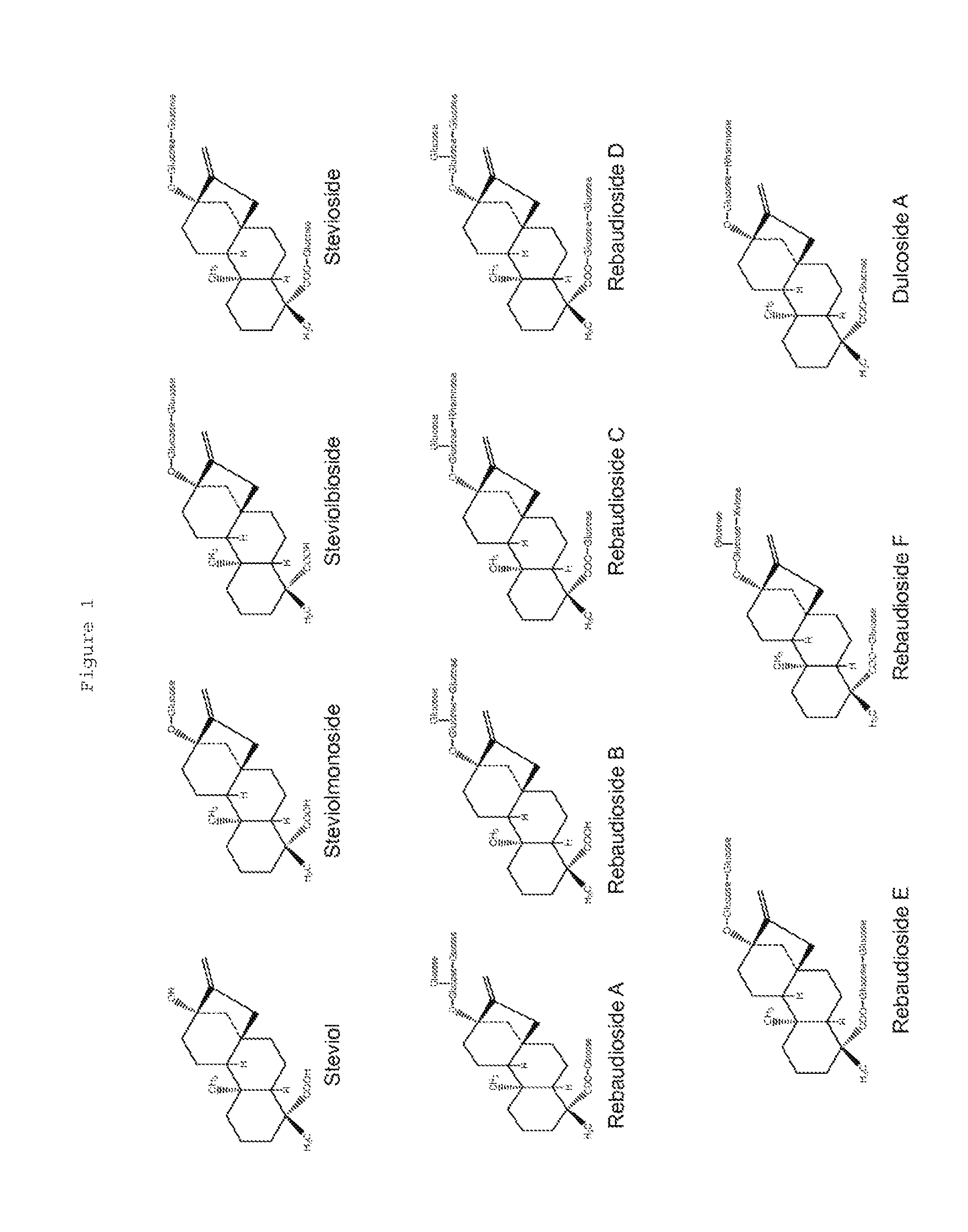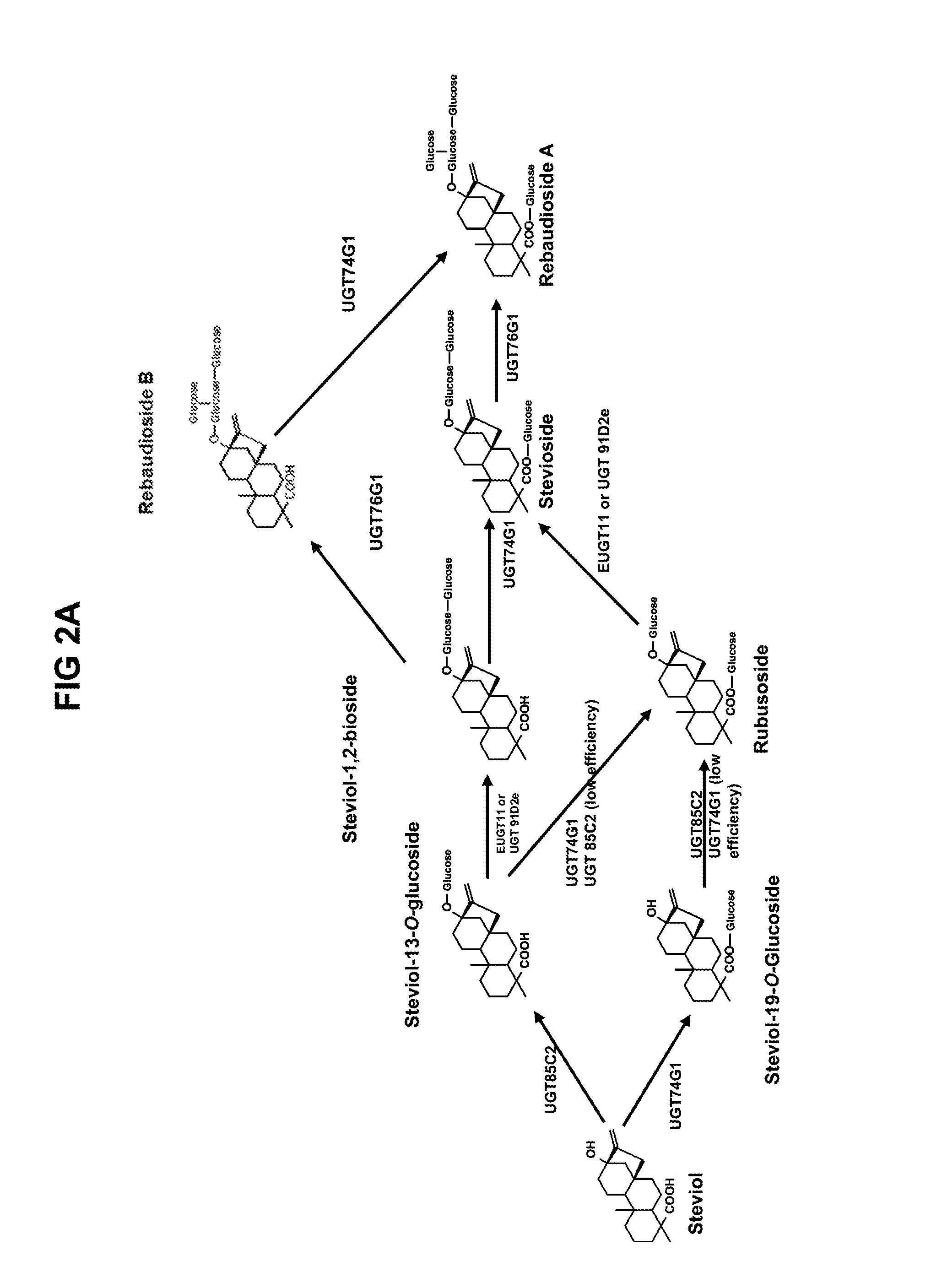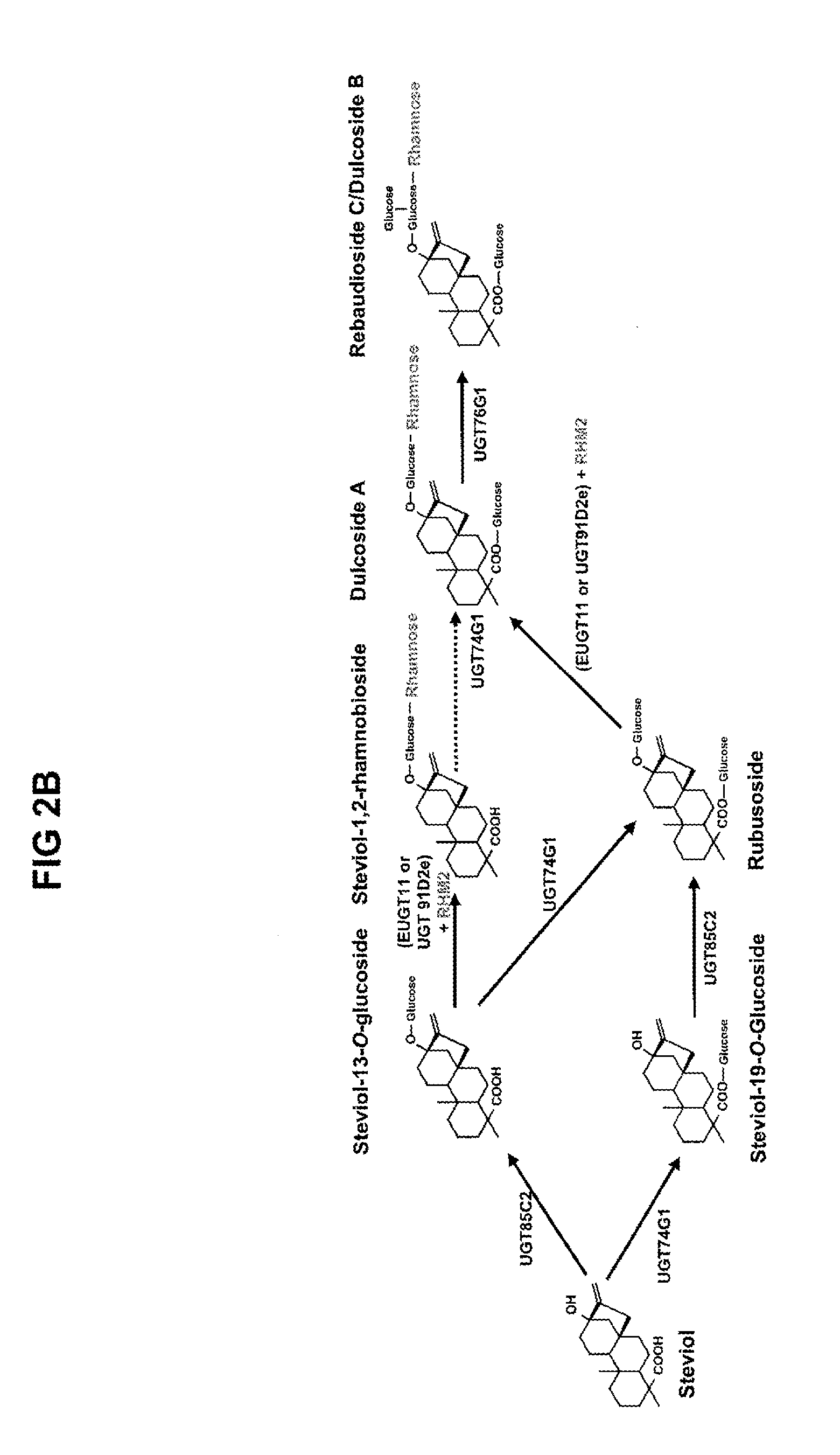Recombinant Production of Steviol Glycosides
a technology of steviol glycoside and steviol, which is applied in the field of recombinant production of steviol glycosides, can solve the problems of more or less problematic off-flavors
- Summary
- Abstract
- Description
- Claims
- Application Information
AI Technical Summary
Benefits of technology
Problems solved by technology
Method used
Image
Examples
example 1
Identification of EUGT11
[0599]Fifteen genes were tested for RebA 1,2-glycosylation activity. See Table 10.
TABLE 10GenBankNameSourceAccession No.EUGT2Oryza sativa UGT91 homologAP003270EUGT3Oryza sativa UGT91 homologAP005171EUGT4Oryza sativa UGT91 homologAP005643EUGT6Oryza sativa UGT91 homologAP005259EUGT7Oryza sativa UGT91 homologAP005171EUGT8Oryza sativa UGT91 homologXM_470006EUGT9Oryza sativa UGT91 homologAP005643EUGT10Oryza sativa UGT91 homologAC133334EUGT11Oryza sativa UGT91 homologAC133334EUGT12Oryza sativa UGT91 homologAC133334EUGT15Petunia × hybrid UGT79 homologZ25802EUGT16Arabidopsis thaliana UGT79 homologAC004786EUGT17Dianthus caryophyllus UGT79 homologAB294391EUGT18Ipomoea nil UGT79 homologAB192314EUGT19Oryza sativa UGT79 homologNM_001074394
[0600]In vitro transcription and translation of these genes was performed, and the resulting UGTs incubated with RebA and UDP-glucose. Following incubation, the reactions were analyzed by LC-MS. The reaction mixture containing EUGT11 (Ri...
example 2
Identification of EUGT11 Reactions
[0602]EUGT11 was produced by in vitro transcription and translation, and incubated with various substrates in the RebD pathway. Similar experiments were carried out using in vitro transcribed and translated UGT91D2e. FIG. 3 shows a schematic overview of 19-0-1,2-diglycosylation reactions performed by EUGT11 and UGT91D2e. Compounds 1-3 were identified solely by mass and expected retention time. The numbers shown in FIG. 3 are the average peak height of the indicated steviol glycoside obtained from a LC-MS chromatogram, and, although not quantitative, can be used to compare the activity of the two enzymes. EUGT11 and UGT91D2e were not able to use steviol as a substrate. Both enzymes were able to convert steviol 19-O-monoglucoside (SMG) to compound 1, with EUGT11 being about ten times more efficient than UGT91D2e at converting 19-SMG to compound 1.
[0603]Both enzymes were able to convert rubusoside to stevioside with comparable activity but only EUGT 11...
example 3
Expression of EUGT11 in Yeast
[0605]The nucleotide sequence encoding EUGT11 was codon-optimized (SEQ ID NO:154) and transformed into yeast along with nucleic acids encoding all four UGTs (UGT91D2e, UGT74G1, UGT76G1, and UGT85C2). The resulting yeast strain was grown in medium containing steviol and steviol glycosides that accumulated were analyzed by LC-MS. EUGT11 was required for the production of RebD. In other experiments, RebD production has been observed with UGT91D2e, UGT74G1, UGT76G1, and UGT85C2.
PUM
| Property | Measurement | Unit |
|---|---|---|
| secondary structure | aaaaa | aaaaa |
| compositions | aaaaa | aaaaa |
| composition | aaaaa | aaaaa |
Abstract
Description
Claims
Application Information
 Login to View More
Login to View More - R&D
- Intellectual Property
- Life Sciences
- Materials
- Tech Scout
- Unparalleled Data Quality
- Higher Quality Content
- 60% Fewer Hallucinations
Browse by: Latest US Patents, China's latest patents, Technical Efficacy Thesaurus, Application Domain, Technology Topic, Popular Technical Reports.
© 2025 PatSnap. All rights reserved.Legal|Privacy policy|Modern Slavery Act Transparency Statement|Sitemap|About US| Contact US: help@patsnap.com



